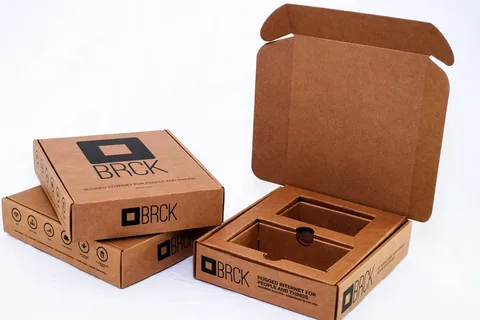In the world of packaging, every detail matters. Ensuring that products reach their destination intact and present themselves attractively is paramount for businesses. Cardboard packaging inserts have emerged as essential components of modern packaging solutions, offering a versatile range of benefits. From safeguarding delicate items to elevating the overall customer experience, these inserts play a crucial role in the packaging industry.
Types of Cardboard Packaging Inserts
Cardboard packaging inserts come in various forms to accommodate different products and needs. Understanding the types and their applications is key to optimizing your packaging strategy. Here are some common types:
- Dividers and Partitions: These inserts create separate compartments within a box, preventing items from coming into contact with each other. They are commonly used for items like glassware, electronics, or medical supplies, where product separation is critical.
- Cushioning Inserts: Designed to protect fragile items, these inserts provide a layer of cushioning to absorb shocks and vibrations during transit. Fragile items like porcelain figurines, delicate electronics, or glass bottles benefit greatly from cushioning inserts.
- Display Inserts: Often used in retail packaging, display inserts enhance product presentation by holding items securely in place. High-end cosmetics, jewelry, and perfumes often utilize display inserts to create an elegant and organized unboxing experience.
- Die-Cut Inserts: Customized to fit specific products, die-cut inserts offer precise protection and presentation. They are ideal for products with unique shapes, such as specialty chocolates, watches, or collectibles.
Benefits of Cardboard Packaging Inserts
Cardboard packaging inserts offer a wide range of advantages:
- Protection: They safeguard products from damage during shipping and handling, reducing the risk of returns or replacements. This not only saves businesses money but also enhances their reputation for quality.
- Organization: Inserts help keep products organized within the packaging, improving the unboxing experience for customers. Organized packaging reduces frustration and makes it easier for customers to access their purchases.
- Cost-Efficiency: By minimizing damage and reducing the need for excessive packaging materials, they can lower overall shipping costs. Additionally, efficient packaging can lead to reduced storage requirements and better use of space during transportation.
Design and Customization
The design of cardboard packaging inserts is highly adaptable. Manufacturers can create inserts to fit the exact dimensions and shapes of the products they protect. This customization ensures a snug fit, maximizing protection and minimizing material waste.
Furthermore, many businesses choose to print branding elements, product information, or even QR codes on their inserts. This not only provides additional value to customers but also serves as a marketing tool.
Applications and Industries
Cardboard packaging inserts find use across various industries, including:
- Electronics: Delicate electronic components benefit from cushioning inserts, which protect against static, impact, and moisture.
- Cosmetics: High-end cosmetic brands rely on display inserts to create a premium unboxing experience for their customers.
- Food: Specialty foods like chocolates and confectionery use die-cut inserts to showcase their products’ unique shapes and textures.
- Pharmaceuticals: Inserts play a crucial role in ensuring the safe transport of pharmaceutical products, particularly temperature-sensitive medications.
Eco-Friendly Packaging
In an era of growing environmental awareness, cardboard packaging inserts shine as eco-friendly options. They are typically made from recycled materials and are fully recyclable and biodegradable, contributing to sustainability efforts. Businesses that prioritize sustainability can communicate their commitment through the use of eco-friendly inserts.
Tips for Using Cardboard Inserts
To make the most of cardboard packaging inserts, consider the following tips:
- Choose the right type of insert for your product’s needs, considering factors like fragility, size, and presentation.
- Utilize the space on inserts for branding, product information, or instructions.
- Ensure proper placement of inserts within the packaging to maximize protection and prevent movement during transit.
Case Studies
Let’s explore a few case studies to see how businesses have reaped the rewards of incorporating cardboard packaging inserts into their packaging strategies.
[Case Study 1]:
Jewelry brand, a high-end jewelry brand, implemented custom die-cut inserts in their packaging. This not only protected their delicate pieces but also enhanced the perceived value of their products, leading to increased customer satisfaction and repeat business.
[Case Study 2]:
Accessories retailer, a tech accessories retailer, reduced shipping damages by 30% after introducing cushioning inserts. This resulted in substantial cost savings and improved their reputation for product quality.
Challenges and Solutions
While cardboard packaging inserts offer numerous advantages, businesses may face challenges in choosing the right type, achieving the desired customization, or managing costs. It’s essential to work closely with packaging experts to address these concerns and optimize the use of cardboard inserts in your packaging strategy.
Future Trends
As packaging technology continues to evolve, cardboard packaging inserts are likely to become even more innovative. Look out for developments such as:
- Augmented Reality Packaging Experiences: Integrating augmented reality elements into packaging inserts to provide interactive and immersive experiences for customers.
- Sustainable Materials: Innovations in sustainable materials for inserts, such as bio-based plastics or plant-based fibers, to further reduce environmental impact.
Conclusion
Cardboard packaging inserts are integral to the world of modern packaging. Their ability to protect, organize, and enhance the presentation of products makes them indispensable for businesses seeking to make a lasting impression on their customers while reducing environmental impact. By understanding the diverse applications and benefits of these inserts, companies can optimize their packaging strategies for success in an ever-evolving market.

